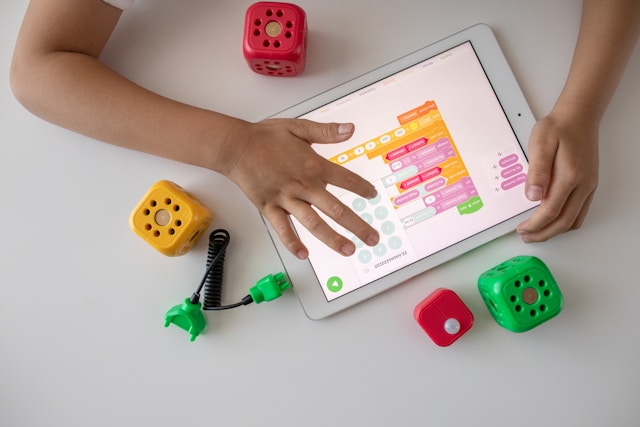As more schools and other educational institutions turn to technology as learning tools, children are starting to use computers, tablets, and cell phones at a much younger age than earlier generations. For many parents, the time to explore the Good Guys Laptops range has come sooner than they would have expected. The internet is a vast and expansive space filled with an endless amount of content, both positive and negative. As children enter this online world, ensuring their safety and protection is imperative. Thankfully, there are many effective strategies parents can implement and promote within their homes to support a positive and safe surfing online experience for the entire family.

Photo by Christin Hume on Unsplash
Set clear ground rules
Before allowing your children to access the online world, it is crucial to have an honest and open conversation about who they communicate with, how they communicate with others, and who can access the information they post online. Explain that anything posted to the internet, like pictures, comments, links, and videos, leaves a trail of data that connects directly to them. As the saying goes, the internet is forever, and they must be mindful of leaving a positive digital footprint.
As part of your guidelines and ground rules, it is crucial that they understand discriminatory and inappropriate contact and content are unacceptable, including spreading rumours or sharing photos and information of others without consent. If your child experiences anything that makes them upset, scared, or uncomfortable, encourage them to let you or another trusted adult in their life know immediately.
Furthermore, establish a schedule that dictates how much screen time your children can have per day outside of homework or school-related activities. Enforce these time limits to promote healthy screen time and computer usage.
Talk about bullying
An unavoidable reality of using the internet is online bullying, which can take many forms. Whether via social media accounts, text messages, phone calls, or email, any form of harassment, particularly verbal insults, can be highly detrimental to a child’s self-esteem and should be taken very seriously.
An essential step in your child’s safe internet usage is educating them on what constitutes bullying and helping them establish strategies when they encounter it, like disengaging with the person responsible for the bullying and letting a trusted adult know as soon as possible.

Photo by bruce mars on Unsplash
Discover the online world together
One of the best ways for your child to understand the internet is to use it. Create fun and informative opportunities for your child to interact positively and safely with friends, family, and you.
Sit down together and explore the online world to help them recognise and avoid misinformation, inappropriate content, websites that pose privacy risks, and anything that can cause anxiety or distress. Show them how to navigate trusted websites and apps correctly, which will give them the opportunity to use these sites with more independence.
Unless they are using platforms specifically designed for children, they will likely be exposed to advertising that could promote unhealthy foods, gender stereotypes, social issues, and other inappropriate information for their age. Discuss with them how to understand this problematic information and ways to safely interact with it.
Reduce public access
All social media applications allow users to edit and control their privacy settings. Younger users should avoid open accounts with unlimited access as much as possible, limiting their scope to family and close friends.
Private accounts will still allow you and your child to use specific platforms the same way, but they will heavily restrict strangers from accessing your pages, photos, and personal information. This is particularly important if your family uses online social media platforms to stay in contact with overseas family members and close family friends, regularly posting photos and updates that include young children.
Use protection software
Periodically, it is vital to check that your child’s device is updated and always running the latest software. Proper privacy settings should be in place and configured to minimise unwanted data collection to ensure nobody is seeing any information they shouldn’t have access to.
As your child gets older, help them learn and understand the importance of protecting their personal information. Teach them how to enable these settings on websites and other social media platforms they may have access to. Keep webcams covered when not being used, and limit access to microphones and cameras on apps where they are not required.
For younger children, download safety tools and applications, such as parental control for safe search and locked applications that require password access, to support positive online experiences. Be cautious of free online resources, including educational learning sites. Popular platforms like Amazon Prime and YouTube allow extended personalisation for child-only content.

Photo by Robo Wunderkind on Unsplash
Model healthy habits
Children typically mimic the behaviour of their parents and other adult figures who are regularly in their lives. One of the most important ways to promote and encourage positive and healthy online behaviour is by practising it yourself. Be mindful of the example you set for your kids and the content you share about them online. If you have a set schedule in place to limit screen time, try to follow the schedule yourself.
Be alert should your child start to become secretive or upset about their online activity. This could be an indication of negative or harmful behaviour, either towards them or by them. If your child’s school regularly uses the internet as part of its learning tools, familiarise yourself with its digital platform and policies.



